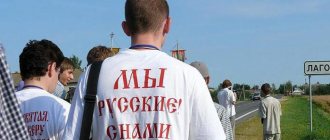Cremation (or cremation) is a ritual burial process that everyone has heard about but knows little about. It is known that this is a long-standing tradition of farewell, during which the body was put on fire (nowadays cremation is carried out in crematoria), and then the ashes were collected and disposed of in accordance with religious canons or the wishes of the deceased.
The difference between cremation and classic burial
Cremation in a crematorium differs from a regular burial:
- as quickly and simplified procession as possible;
- low cost.
If you decide to cremate your loved one in a state crematorium, this will save both your nerves and the funds set aside for purchasing a grave, making a monument or cross, installing a fence, landscaping and subsequent care of the site. The urn with ashes, which will be given to you at the crematorium, can also be buried in a cemetery in accordance with the classical rite, and you will still spend less money, because The plot will need to be small in size (about a meter by meter, so that you can install a small monument or cross), and you can take care of it yourself.
Funeral service
A funeral service is a church service performed over the body of the deceased. The ceremony takes place immediately before the cremation ceremony. The event takes about 30 minutes.
Price of service in the morgue: 4,000 - 6,000 rubles . In churches - from 5,000 rubles . In cathedrals like Elokhovsky, Christ the Savior, the funeral service will cost several tens or hundreds of thousands of rubles. At the crematorium, the cost of the ceremony is added to the cost of the priest’s departure. Average price - 5,000 - 7,000 rubles .
How cremation occurs
During cremation in a crematorium, when the body is put on fire, the tissues turn into inorganic compounds that make up the soil (a similar process occurs when buried in the ground). In other words, cremation is a method of burial using fire, after which the body is mineralized, transformed into dust and becomes part of the soil in 1-1.5 hours (with a classic burial, this process takes more than 20 years).
In the Russian Federation, cremation in crematoriums is becoming an increasingly common form of burial every year, while the share of this method in large settlements is 40%, and in St. Petersburg and the Moscow region - 70%. This is mainly due to the problem of lack of space in cemeteries and the fact that the price of cremation is quite low.
The complete cremation procedure takes 20-50 minutes, after which the ashes are collected in an urn (special sealed packaging) and within 2 days relatives can pick up the ashes and bury them in one of the following ways:
- by making a “Memory Diamond” from the ashes;
- by burial in a special storage of urns with ashes - columbarium;
- by burial in a family grave;
- by scattering the ashes, if the deceased so desired.
Morgue services
Although morgue services are considered free in Russia, each morgue has its own price list for services. The cost consists of the labor intensity of the work, greed or local corruption.
Free morgue services
The morgue also offers free services for which employees do not have to charge money. These include:
- Transporting the body of the deceased to the morgue.
- Determining the cause of death.
- Storage of the body in the morgue for up to 7 days, or 14 days. In the second case, a statement is required indicating an objective reason for extending the period.
- Issuance of an official death certificate.
- Washing the body, dressing it in clothes given by relatives.
- Laying on the coffin.
- Transporting the deceased to the funeral hall.
Paid morgue services
The category of paid services includes posthumous restoration of the body, including makeup and other work to prepare the deceased for the farewell ceremony:
- Elimination of post-traumatic and post-mortem defects.
- Embalming.
- Performing post-mortem makeup.
- Nail cutting.
- Shaving.
- Preparing the body of the deceased for transportation over a long distance.
- Carrying out the coffin and loading it into the hearse.
Embalming is the most expensive service from the listed package. Its cost starts from 13,000 rubles . Elimination of body defects will cost approximately 3,000 rubles , deodorization - from 5,000 rubles .
The services of conventional morgues are cheaper. The approximate price range for all options is 12,000 - 18,000 rubles . In forensic morgues, the cost of similar work can exceed 24,000 rubles .
| 8 City ritual service MosRitual |
What documentation is required for cremation?
For cremation, relatives or other people who request the procedure (regardless of how much cremation costs) must have the originals with them:
- death certificate issued by the Civil Registry Office and the MFC;
- passports of the funeral organizer.
In addition, you will need a cremation certificate to collect the urn with ashes.
All services of cremation and organization of a funeral event, including the preparation of all documentation and client support, lie on the shoulders of legal funeral companies, so the choice of an agent must be treated with special attention so as not to waste extra money and nerves.
Cremation during coronavirus
Coronavirus has even made changes to funeral procedures. There is no official ban on visiting cemeteries yet, but the authorities have already issued recommendations on burials. It is proposed to refrain from mass farewell ceremonies, and also to use personal protective equipment (masks and disposable gloves). If a person died from coronavirus, then, on the recommendation of the WHO and with the approval of Rospotrebnadzor, his body should be buried in a closed coffin. In Russia, to reduce the risk of infection, restrictions have been introduced on contact with the body of the deceased. Cremation is not necessary.
Muscovites do not face this question; they have a choice. In the Russian outback, cremation of those who died from coronavirus is excluded. The reason is the lack of crematoria. It is necessary to bury loved ones in the traditional way, observing all safety requirements.
You can find out more about coronavirus in another article -.
Cremation in Moscow. Is it possible?
Nowadays, cremation has become not only a ritual, but also the most economical type of funeral. After cremation, an urn containing ashes is given to relatives or friends and buried in special niches in the columbarium. If the deceased asked to be buried in the ground, the urn can be placed in a small area in the cemetery.
In Moscow, body cremation is carried out only in state crematoria, of which there are three in our capital:
- Mitinsky on the 6th km of Pyatnitskoye Highway;
- Nikolo-Arkhangelsky in the Balashikha district;
- Nikolo-Khovansky on the 21st km of the Kyiv highway.
Crematorium services
Services must be ordered through the central dispatch service. This option is not available to the relatives of the deceased; they must contact specialized agencies. "MosRitual" is an official funeral service and has an agreement with the CDS.
Standard range of cremation services:
- Organizing a farewell ceremony in the ritual hall.
- Musical accompaniment of the ceremony.
- Cremation.
- Sealing the urn.
- Engraving on the urn.
The cost of crematorium services is divided into packages from one to five. The cost of the first package is 13,433 rubles . The fifth will cost 22,433 rubles .
There is a nuance. The first, second and third service packages are not available. Crematoria explain this due to workload and other reasons. You have to count on an amount of 20,000 rubles .
The urn will have to be purchased separately from the crematorium store. Its price starts from 8,000 rubles . It is impossible to provide an urn purchased somewhere else, don’t even try, nothing will happen except a scandal.
MosRitual offers an exclusive cremation package for our clients - crematorium services RUB 21,000. + ballot box 3,000 rub. There are no more favorable conditions anywhere in Moscow and the region.
You can find out detailed information about cremation from our operators by calling 24/7.
How much does it cost to cremate a person?
Cremation is carried out only in specially equipped state crematoria (there are three of them in the capital), and therefore the cost of cremation is regulated by the local government and is the same for all crematoria (the price of cremation in Moscow is set separately for adults, adolescents and children).
Cremation of a person in a budget crematorium includes the process of cremation of the body of the deceased, as well as renting a hall for organizing a funeral service and further transfer of ashes to relatives. The standard cremation procedure lasts about 20 minutes, but the funeral service can be extended for an additional fee.
Cremation oven operator, who is this?
This is the name of the profession of the people who work in the crematorium. They are the ones who arrange and manage the entire cremation process. They accompany the body from entering the crematorium to giving its ashes to relatives. Operators bring the coffin with the body on a special transport and leave it near the “loading console”. After the device is connected, long arms are extended from it, the coffin is lifted from the transport and loaded into the oven. The employee turns on the oven and waits for the remaining muscle and skin to burn. The last and main step is the collection of ashes and bones. The bones are crushed using a device, turning them into dust. Next, the worker collects everything into a funeral urn, numbers it, and passes it on to relatives.
What to do after cremation
After the cremation in the crematorium and the funeral service for the deceased have ended, the relatives take (no later than 2 days after cremation) the urn with ashes and place it in a grave in the cemetery, place it in a closed or open columbarium or scatter the ashes, if this was the will of the deceased ( According to Russian legislation, special places for this are not defined and you are not limited in your choice).
Ashes resulting from cremation will require an urn, the cost of which depends on the size, material and presence of decorations.
In addition, after cremation in a crematorium, it is worth deciding on a columbarium if you decide not to scatter the ashes and not bury them in the ground. Columbariums (places for storing urns) are located at cemeteries. There are open and closed columbariums, but all have walls with cells in which urns are placed. The cells are closed with a marble slab on which information about the deceased is written.
If you decide to bury your loved ones by cremation, MosGupRitual will take care of all the hassle, negotiate with the crematorium, organize the delivery of the body and accompanying persons to the cremation site, help with choosing a burial place or columbarium and fill out all the necessary documentation for you. Just contact our specialists by phone and entrust the organization of the funeral to a trusted agency.
Position of the Orthodox Church
By law, the church in Russia is separated from the state. However, the opinion of the Orthodox Church is taken into account by many politicians, because the vast majority of believers recognize themselves as Christians.
How does the church view cremation? There is plenty of evidence in the Bible that burning was a method of punishment, but not a peaceful repose. The most recognizable heroes were buried and not cremated:
- John the Baptist - Matthew 14:12.
- Sarah (Abraham's wife) – Genesis 23:1-4.
- Isaac - Genesis 35:29.
- Joshua - Joshua 24:29-30.
- Abraham - Genesis 25:8-10.
Some Christians still admit that the cremation of Orthodox Christians is permitted, because the trends of modern society cannot be overlooked. For others, there is not much difference between the state in which the deceased is buried - ashes after cremation or a body in a coffin.
Agency services
The cost of the agency's services includes: purchase of ritual goods and their delivery to the morgue, organization of transport, moving the coffin, full support of the ceremony.
- Products: wreaths, flower arrangements, ribbons, coffins and bedding for the deceased. The cost depends on the selected models.
- Delivery of supplies to the morgue is about 2,000 - 3,000 rubles . Delivery of large wreaths of fresh flowers by refrigerator will cost up to 10,000 rubles .
- Transport - Mercedes bus. Rental price: 12,000 - 18,000 rubles .
- Services of 4 loaders - 8,000 rubles . If the coffin is large, 6 people will be required to carry the coffin - 14,000 rubles .
We are ready to take full charge of the entire funeral organization. We offer agent services for collecting documents and legal support.
| 8 City ritual service MosRitual |
Description of famous crematoria in history and their features
Cremation, carried out in a special oven, is carried out by feeding hot gas into it. The device operates in automatic mode. The body is burned, and the resulting ashes are packed into special urns. They are passed on to relatives.
The most famous crematorium operating in Russia was the Donskoy crematorium. This was the first such institution in the USSR. It was opened in 1927 and from that time on they began to actively promote the idea of the need to burn corpses among the population. Columbariums with urns were located indoors and outdoors.
The bodies of Vladimir Mayakovsky, Maxim Gorky, Valery Chkalov, and Kirov were burned in the Donskoy crematorium. He is mentioned in Bulgakov's novel "The Master and Margarita".
The second crematorium was opened in Leningrad during the Second World War. The bodies of those who died from hunger and wounds could not be buried due to lack of space, labor, and relatives. Thanks to them, the epidemiological situation in the city was significantly improved; the dead were no longer buried in mass graves, which deprived relatives of any hope of receiving information about the fate of the deceased.
The largest number of crematoria were located in territory controlled by Nazi Germany. These institutions became an integral part of the contravention camps.
Traditional funerals in Russia
In the vastness of the Russian state you can meet people professing a variety of religions. The majority of Russians are Orthodox Christians. Therefore, most often the question of cremation or funeral is decided in favor of traditional burial in compliance with customs.
An Orthodox funeral is a complex event, including preparing the body of the deceased for burial, placing the deceased in a coffin and burial with the installation of a cross. The tradition of seeing off the deceased to another world arose in connection with the association of believers that earthly life is just a stage before eternal existence. It is believed that after death the spirit of the deceased is resurrected and the soul continues to live. From the perspective of Orthodoxy, death is a transitional period when the flesh falls asleep. At this time, the spiritual essence leaves the human shell and goes to meet the Almighty.
The canonical traditions of funerals according to Christian customs include the following mandatory conditions:
- washing the body of the deceased;
- dressing the deceased in new or clean clothes for the funeral (there are different requirements for women and men regarding the number of items, color, accessories);
- placing the deceased in a coffin. It is considered the last refuge in earthly life. The product must be made of wood;
- an icon is placed inside the domina, the body is covered with a shroud, and a candle or cross is placed;
- before the burial of the deceased, a funeral service is held, a memorial service is organized, a lithium is held in the church;
- The body is buried in a coffin in the cemetery. Suicides and criminals are buried in a separate cemetery area;
- at funerals, they perform a ritual of covering each person saying goodbye with earth;
- after burying the grave, they place a wooden cross at the foot;
- After the burial, a funeral dinner is served.
Orthodox funerals involve remembering deceased loved ones on certain dates according to the church calendar, as well as on the 3rd, 9th and 40th days, anniversaries of death.
The history of cremation
The history of fire burial goes back several thousand years. Cremation appeared much earlier than any world religion. In many ancient cultures, this was the most prestigious ritual. The emergence of corpse burning dates back to the late Neolithic and early Bronze Ages. Burning corpses at the stake was common among the Etruscans, Greeks, Romans and some other ancient peoples; It was also used by the ancient Slavs.
Corpse burning has long been used in Japan and the countries of Southeast Asia, mainly where Buddhism and Hinduism are practiced. Ancient people perceived fire as a deity and believed that setting the body of a deceased relative on fire would ensure his protection in the afterlife.
With the advent of new world religions of the new era, cremation began to be replaced by inhumation (burial in the ground) and by the early Middle Ages it was prohibited in almost all European countries.
During the period of rapid development of exact sciences and medicine in the 18th-19th centuries, a new concept of “cemetery hygiene” appeared, which contributed to the revival of a long-standing tradition with the help of technical means - cremation ovens.
The problem of cemetery hygiene has united the efforts of doctors and engineering scientists in promoting an alternative form of burial to cremation and the construction of crematoria.
How is a person cremated?
The corpse is burned in a special industrial oven, powered by gas or other fuel and consisting of 2 chambers. In the first, the air temperature fluctuates between +870...+1100 °C, which ensures the complete disintegration of the physical body. Relatives of the deceased often ask the question: “Are they cremated in a coffin or not?” Yes, in the chamber a human corpse is burned in a coffin, which catches fire first, after which the soft tissues of the body ignite.
Setting up the operation of the furnace depends on the following significant factors, which allow the crematorium staff to select the correct combustion mode:
- age of the deceased;
- body weight;
- the number of days that have passed from the moment of death to the cremation of the corpse;
- features of the lifestyle of the deceased (diet, presence of diseases and drug therapy).
Some medications cause dehydration, leaching calcium from the body's bones, which affects how long the burning lasts. On average, the procedure takes about 2.5 hours. The corpse of a person who died from tuberculosis or cancer, as well as the bodies of drug addicts, take longer to burn. The flammability of the material used to make the coffin also influences how long the procedure will take. In order to reduce funeral costs, you can choose a wooden container to accommodate the deceased without expensive fittings, internal contents in the form of silk upholstery and other decorative elements.
In the second compartment of the unit, the cremulator, the remains are crushed in a centrifuge to a homogeneous mass - ash. In some crematoria, it is sifted by hand and the solid remains are broken up with a special hammer, so the burning process takes longer. The result is a substance - what is called the ashes of the deceased. Steel objects are removed from the ashes using a magnet and given to the loved ones of the deceased.
After the cremation of a person’s body is completed, the ashes are poured into a special metal capsule. Registration of each incoming ashes makes it possible to prevent mixing of ashes - this is how everything happens, incl. registration at the crematorium. The deceased is assigned an identification number. A tablet with it is placed on the lid of the coffin, subsequently remaining inside a sealed capsule or urn, which the employee of the institution gives to relatives.
India
In India, all the dead are burned and their ashes are poured into the sacred Ganges River. With the development of technology, crematoriums began to be built in big cities. But in most regions, the tradition of burning the dead in ritual bonfires has been preserved.
This ritual is often used to attract tourists. Most visitors are horrified after what they see, but those who want to see the unique Indian traditions are not decreasing. Some tourists repeatedly visit ritual burnings to experience unusual shocking emotions.
Sprinkling the ashes into the Ganges River is a mandatory requirement for burial. Residents of distant regions still find a way to bring the ashes of their loved ones to the sacred waters. Before the immersion procedure, the ashes are placed in an urn and stored for 9 days near the cremation site and 40 days at its entrance.
International cremation statistics
| A country | Number of crematoria | % cremation |
| Czech | 27 | 81 |
| Slovenia | 2 | 79 |
| Switzerland | 28 | 78 |
| Denmark | 32 | 78 |
| Sweden | 66 | 77 |
| Great Britain | 260 | 73 |
| Netherlands | 69 | 57 |
| Belgium | 12 | 47 |
| Luxembourg | 1 | 43 |
| Finland | 22 | 42 |
| USA | 2113 | 41 |
| Germany | 152 | 40 |
| Russia | 17 | 38 |
| Hungary | 12 | 37 |
| Norway | 24 | 35 |
| France | 151 | 31 |
| Austria | 11 | 29 |
| Serbia | 2 | 23 |
| Spain | 132 | 21 |
| Latvia | 1 | 15 |
| Italy | 58 | 13 |
| Poland | 13 | 10 |
| Romania | 1 | 0,5 |









